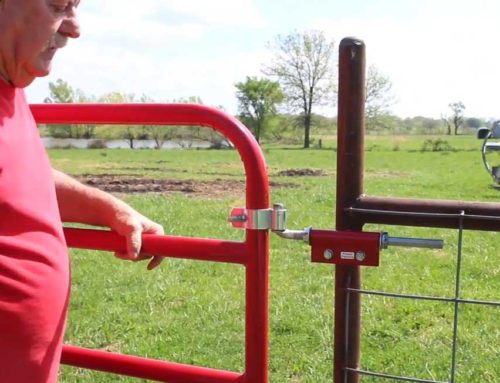Dr. Matt Poore also contributed to this article. The tools to improve productivity that we have at our disposal are quite astonishing. Computers that allow us to analyze our operations, equipment used to plant/harvest crops to produce feed, and the genetic predictions used to select better livestock are just a few examples of tools that
have changed livestock production. As managers, we must determine which tools to incorporate into our farms and some will prove to be useful while others will be discarded.
In grassland agriculture, temporary electric fence has changed everything for us. Reels, poly-wire and tread-in posts coupled with a good energizer allow us to more actively manage our pastures. But, as with most technology, getting started can be a challenge. It helps to know that even the most advanced graziers started with a single strand (or 2-3 strands for small ruminants) subdividing one permanent pasture at the water source. From there, all improvements in your grazing management journey depend on “the power of one wire”.
So, what benefits does adaptive grazing management – using smaller paddocks and more frequent movement – have on the system? We know that when we only graze for a few days and then rest the grass for a long period the grass stand is healthier and produces more total forage. Furthermore, this approach alters the grazing behavior of the livestock making them less selective and improves the amount of grass consumed rather than wasted. These and other benefits are well documented, and it is all because of the effective use of temporary electric fence. But, many producers do not fully realize the numerous advantages of using this technology.
So, what are some of the benefits you can expect if you adopt temporary fencing?
Better Animal Health

First, using temporary electric fence gives you the opportunity to observe your livestock as they move to new grass. Cattle producers can use this time to check body condition, udders, feet and leg soundness and fly populations. What about that cow that is moving slowly? You can clearly observe how she walks and determines if she needs treatment for foot rot or needs to be added to the cull list due to age or some other unsoundness. Most all of these items fall into the Beef Quality Assurance programs and will allow producers to effectively monitor their herds and provide for their welfare. Moving cattle more frequently also improves their disposition and makes them easier to handle. Just moving them one to two times weekly can make a big impact as they will learn you most often are there to give them better grass, and they become accustomed to being near you and walking by you without being afraid.





